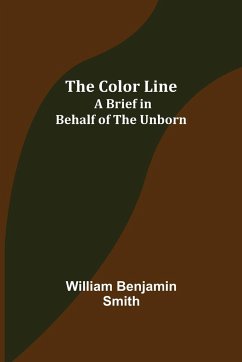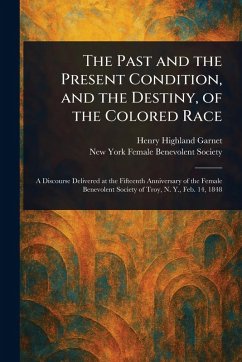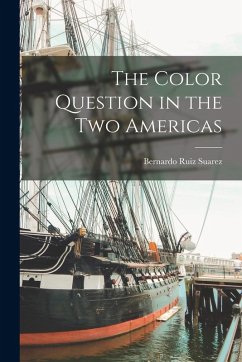
The Color Line; a Brief in Behalf of the Unborn
Versandkostenfrei!
Versandfertig in über 4 Wochen
22,99 €
inkl. MwSt.
Weitere Ausgaben:

PAYBACK Punkte
11 °P sammeln!
"The Color Line; a Brief in Behalf of the Unborn," written by William Benjamin Smith and originally published in 1905, offers a compelling, though controversial, perspective on race relations in the early 20th century United States. Smith, a mathematician and professor, presents his arguments regarding the complexities and challenges of racial integration, drawing on historical and sociological observations. The work provides a snapshot of the prevailing attitudes and debates surrounding race during a pivotal period in American history. While certain viewpoints expressed within the book reflec...
"The Color Line; a Brief in Behalf of the Unborn," written by William Benjamin Smith and originally published in 1905, offers a compelling, though controversial, perspective on race relations in the early 20th century United States. Smith, a mathematician and professor, presents his arguments regarding the complexities and challenges of racial integration, drawing on historical and sociological observations. The work provides a snapshot of the prevailing attitudes and debates surrounding race during a pivotal period in American history. While certain viewpoints expressed within the book reflect the biases of its time, "The Color Line" remains a valuable resource for understanding the historical context of racial discourse and the evolution of perspectives on race and identity. It serves as a primary source for researchers and students interested in the history of race relations and the intellectual history of the early 20th century. This edition allows contemporary readers to engage critically with Smith's arguments and to reflect on the progress and ongoing challenges in achieving racial equality. This work has been selected by scholars as being culturally important, and is part of the knowledge base of civilization as we know it. This work was reproduced from the original artifact, and remains as true to the original work as possible. Therefore, you will see the original copyright references, library stamps (as most of these works have been housed in our most important libraries around the world), and other notations in the work. This work is in the public domain in the United States of America, and possibly other nations. Within the United States, you may freely copy and distribute this work, as no entity (individual or corporate) has a copyright on the body of the work. As a reproduction of a historical artifact, this work may contain missing or blurred pages, poor pictures, errant marks, etc. Scholars believe, and we concur, that this work is important enough to be preserved, reproduced, and made generally available to the public. We appreciate your support of the preservation process, and thank you for being an important part of keeping this knowledge alive and relevant.












